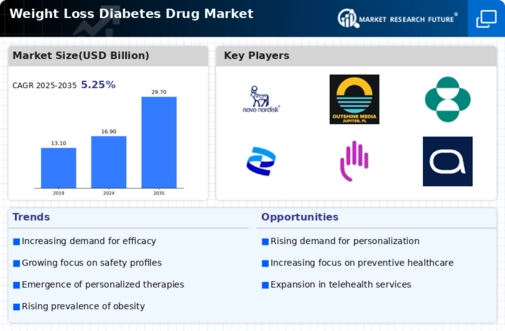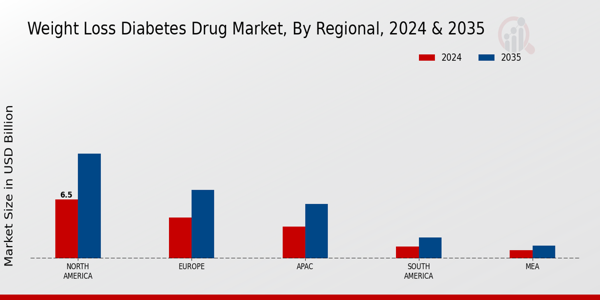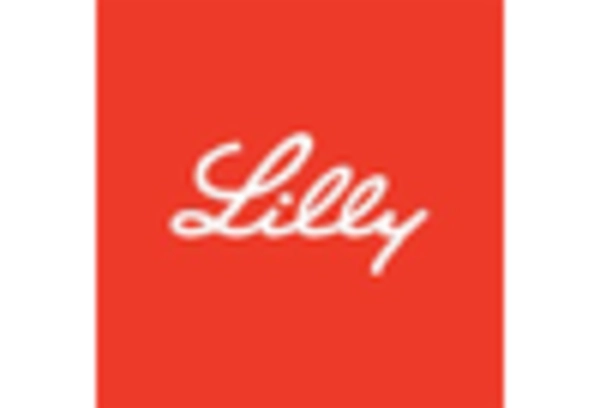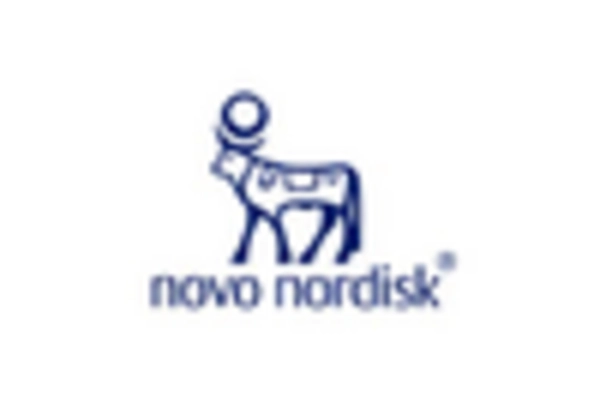Advancements in Pharmaceutical Research
Ongoing advancements in pharmaceutical research are propelling the Weight Loss Diabetes Drug Market forward. Innovative drug development techniques, including the use of biotechnology and personalized medicine, are paving the way for more effective treatments. Recent studies have indicated that certain medications can lead to significant weight loss while simultaneously improving glycemic control. This dual benefit is particularly appealing to healthcare providers and patients alike. As research continues to unveil new therapeutic targets and mechanisms, the market is poised for growth. The Weight Loss Diabetes Drug Market may witness a wave of new entrants, as companies strive to capitalize on these scientific breakthroughs and meet the evolving needs of patients.
Growing Awareness of Diabetes Management
There is a growing awareness regarding the importance of diabetes management, which is significantly influencing the Weight Loss Diabetes Drug Market. Educational campaigns and healthcare initiatives are increasingly emphasizing the role of weight management in controlling diabetes. This heightened awareness is leading to more patients seeking medical advice and treatment options that address both weight loss and diabetes. As a result, healthcare providers are more likely to prescribe medications that target these interconnected issues. The Weight Loss Diabetes Drug Market is likely to benefit from this trend, as patients become more proactive in managing their health and seeking out effective solutions.
Regulatory Support for New Drug Approvals
Regulatory bodies are providing support for the approval of new weight loss medications, which is a crucial driver for the Weight Loss Diabetes Drug Market. Streamlined approval processes and incentives for developing drugs that address obesity and diabetes are encouraging pharmaceutical companies to invest in research and development. Recent regulatory changes have made it easier for innovative therapies to reach the market, thereby increasing the availability of effective weight loss drugs. This supportive environment is likely to foster competition and innovation within the Weight Loss Diabetes Drug Market, ultimately benefiting patients who require effective treatment options.
Increasing Prevalence of Obesity and Diabetes
The rising incidence of obesity and diabetes is a primary driver for the Weight Loss Diabetes Drug Market. According to recent statistics, approximately 422 million people worldwide are living with diabetes, with obesity being a significant risk factor. This alarming trend has led to a heightened demand for effective weight loss solutions that also address diabetes management. As healthcare providers increasingly recognize the link between weight and diabetes, the market for drugs that facilitate weight loss while managing blood sugar levels is expected to expand. The Weight Loss Diabetes Drug Market is likely to see innovations in drug formulations that cater to this dual need, potentially leading to a surge in new product launches and increased competition among pharmaceutical companies.
Rising Healthcare Costs and Economic Burden of Diabetes
The economic burden associated with diabetes management is a significant driver for the Weight Loss Diabetes Drug Market. As healthcare costs continue to rise, there is an increasing focus on preventive measures, including weight management. The financial implications of untreated obesity and diabetes can be substantial, prompting both patients and healthcare systems to seek effective solutions. This economic pressure is likely to drive demand for weight loss drugs that also aid in diabetes control. The Weight Loss Diabetes Drug Market may see a shift towards more cost-effective treatment options, as stakeholders aim to reduce long-term healthcare expenditures while improving patient outcomes.


















Leave a Comment